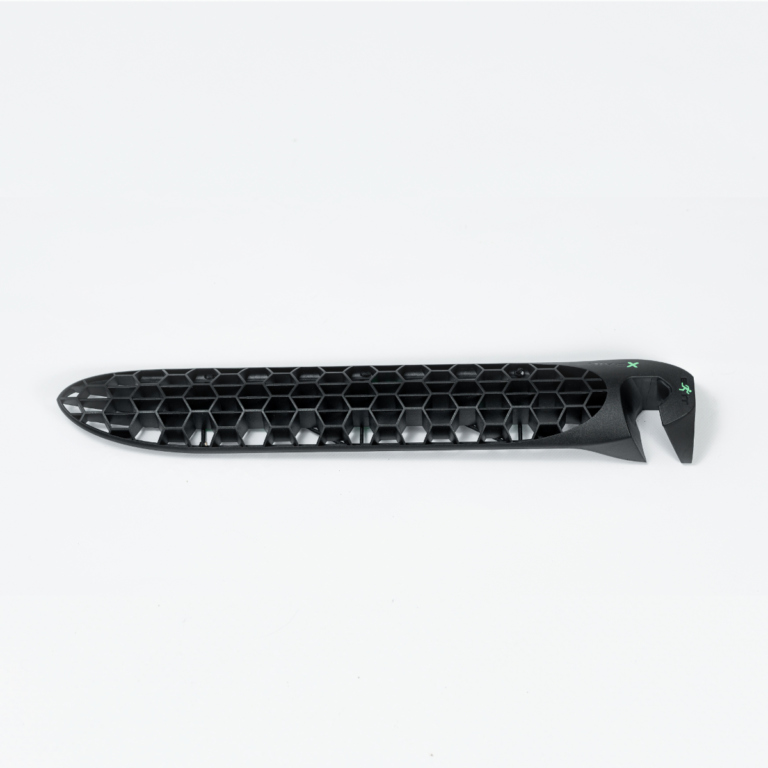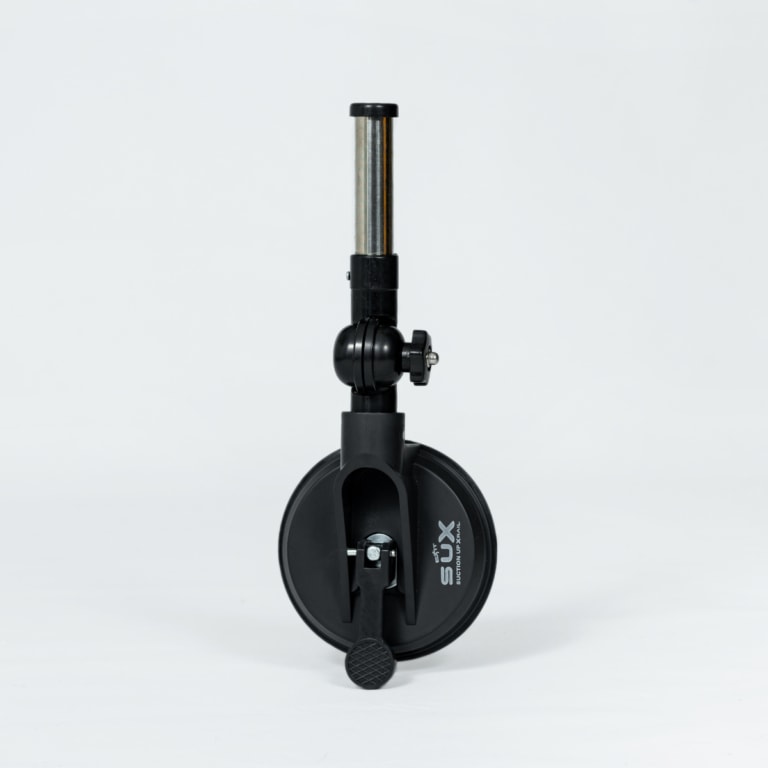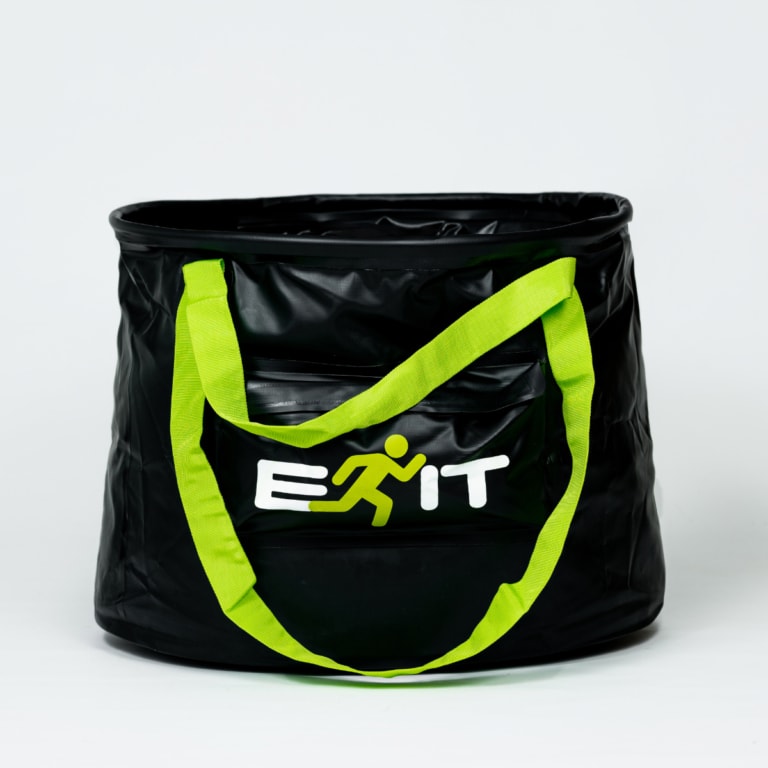SUP foiling was always seen as technically quite difficult. Especially the downwind end of the spectrum. But with the introduction of the downwind foil board – which suits waves and bumps – plus the foil assist SUP foiling has gained in popularity. In this article, we delve a little deeper into the world of SUP foiling and talk to SUP Mag UK editor, who does his fair share, Tez Plavenieks.
-
XRail wetsuit hanger | Exit watersports accessories
€34.90 incl. VAT -
BUX wetsuit change bucket | Exit watersports accessories
€49.90 incl. VAT
Table of Contents
What is SUP foiling?
SUP foiling can be split into two camps. Firstly, you have SUP foiling in waves. Which is a little like stand up paddle surfing only with a foil beneath you. This can be a way to make use of even smaller swells. SUP surfing itself used to be the go to for gutless waves but with a foil the threshold is lowered even further.
Downwind SUP foiling is perhaps the most talked about form of SUP foiling. When paddle boarding emerged chasing offshore bumps aboard open ocean going 14’ plus boards was deemed the pinnacle of performance. With the introduction of foiling it’s now the flying style of downwinding that attracts riders.
How difficult is SUP foiling?
As a discipline in its own right, foiling on a SUP requires the same amount of perseverance and dedication as anything else. Arguably wing foiling is easier. But SUP foiling in waves is pretty simple to transfer across to if you already have SUP surfing experience. Your paddle is important and being able to use it effectively is the key.
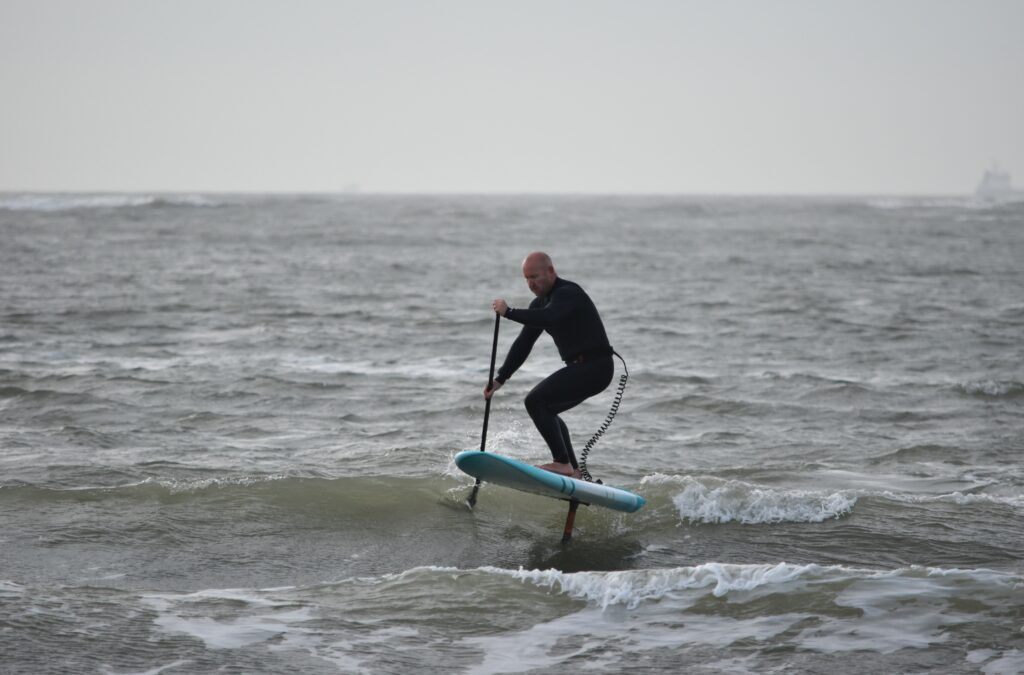
Downwind SUP foiling is much harder by comparison. Relying upon wind energy to ruffle the water’s surface it takes a little while to get used to catching those bumps. But with patience, you’ll get there. The learning curve is steep and with the right kit the process can be quicker.
What equipment do you need?
Contrary to popular opinion you don’t need a downwind foil board for SUP foiling in waves. A board that floats you, that you’re comfortable paddling on, will work. In fact, something slightly wider may be better. Downwind SUP foil boards are often super narrow and susceptible to chop and current. While waiting for your set you may be spending lots of time falling in which can zap energy. The type of foil you choose is dependent upon the type of waves you’re surfing. Bigger, glidier foils for smaller swell for instance.
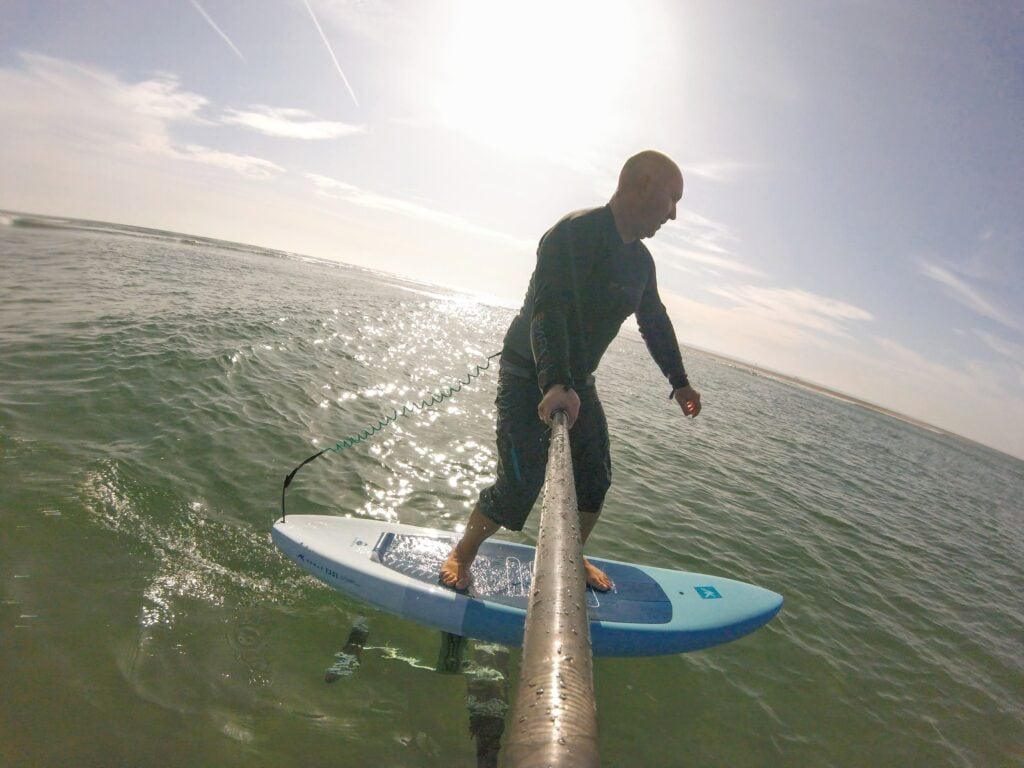
Downwind boards are essential for easy, early release when downwinding. But their narrow nature makes them tricky. A wider span foil with a higher aspect ratio is favoured so riders can keep the glide when traversing from bump to bump. A fast foil is also often preferred. And don’t forget your paddle! A good quality, efficient design will help no end.
What conditions do you need – SUP foiling in waves?
You can SUP foil in any type of waves with the right gear and skill set. The key is to be comfortable with what you use and where you use it. I’d suggest steering clear of headline surf breaks though as it’ll often be too busy.
Also, waves that roll and peel left or right will reward riders with much longer riders than closeout swells you often find at UK beach breaks. Start off small and work your way up to bigger surf. Although you don’t have to go big at all!
What conditions do you need – downwind SUP foiling?
Back when stand up paddle boarding was burgeoning downwind was about wind – lots of it! The more the better. With hydrofoils being so efficient there’s an argument to say riders don’t need quite as much. Or as a big a bump. In fact, there’s plenty of evidence of DW foilers flying in next to no breeze and swell.

That said, for foilers learning you’ll be needing something of a blow. At least until you develop the necessary skills to dial back the conditions. The more wind the bigger the bump. Which will make it easier to get on foil.
Safety while foiling.
As with all foil sports there’s a risk. Many foilers choose to wear impact protection vests and helmets. A lid, at the very least, will help protect your bonce should it connect with your foil or any other hard object. An impact vest will help if you stack it in general. Which could be often during the learning phase.
You may also choose to carry additional floatation – such as a Restube. If you’re chasing offshore downwind conditions then a means of communication should it all go awry is worth it. Maybe even flares for those who know how to use them.
What about the foil assist?
The foil assist has become a huge talking point of late. Mostly with Foil Drive driving the conversation (no pun intended). Foil assists will help boost riders on foil when it may otherwise prove to be hard work getting there. They also help riders bypass the need to develop effective paddle strokes. Of which there’s some debate surrounding.

With a foil assisted setup it’s easier than ever to get on foil and stay there. With minimal effort riders will catch their chosen swell and pump back to take off following their finished ride. Those who ride with foil assists all tell how addictive it is.
The seven fun points of SUP foiling.
- You can catch smaller waves.
- Ride for longer without touching down.
- Catch open ocean bumps more efficiently.
- Cover greater distances.
- Enjoy more sessions more often.
- Ride spots you wouldn’t normally bother with.
- Have more fun!
Summing up.
For many SUP foiling is a complimentary discipline to their other foiling activities. Although, many who start off dabbling end up doing more than they’d think. DW SUP foilers will tell you it’s a freer feeling than downwind with a wing. Whilst SUP foilers in waves will lament the benefits of holding a paddle. SUP foiling is super fun and worth having a look at if you’re already doing other foil sports. It’s extremely fun and super addictive!

